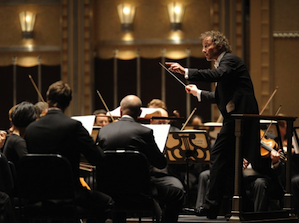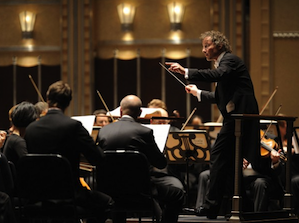
Photo by Roger Mastroianni
Music Director Franz Welser-Möst will lead a fascinating five-day Cleveland Orchestra program in Severance Hall, Oct. 22-26. "Fate and Freedom: Music of Beethoven and Shostakovich" is an orchestral festival, in partnership with the Cleveland Museum of Art and the Cleveland Institute of Art Cinematheque, including concerts, film screenings, pre-film and pre-concert talks, and a chamber music performance by members of the orchestra.
Says Welser-Möst: "Beethoven and Shostakovich were very political composers. Their music was written to express the feeling of the times they lived in — there were new feelings about how to live. Beethoven’s Third Symphony was the first big musical and philosophical statement by a composer about what freedom can mean, both individually and collectively. Shostakovich lived under a suppressive regime. His symphonies represent personal despair. The symphonies of Beethoven and Shostakovich can teach us so much about our lives."
On three consecutive evenings, the Cleveland will pair Beethoven's Symphonies Nos. 3, 4, and 5 with Shostakovich's Symphonies Nos. 6, 8, and 10, respectively. Welser-Möst will provide pre-concert talks with Frank J. Oteri, New Music USA's composer advocate and the senior editor of NewMusicBox, and Rebecca Mitchell, visiting assistant professor of Russian/Soviet history, Oberlin College.
The Cinematheque screens Stanley Kubrick’s A Clockwork Orange, which features music from Beethoven's Symphony No. 9, to open the festival on Oct. 22. The Cleveland Museum of Art screens The New Babylon, a revolutionary 1929 silent film featuring Shostakovich’s first film score, on Oct. 23. Set at the time of the Franco-Prussian War, the film views the era’s clash of social classes through the life of a Paris department store clerk who caters to the rich but sympathizes with the discontented workers behind the socialistic Paris Commune of 1871. The score consists of jazz- and cabaret-inspired music and shows Shostakovich at his most wild and satirical.

